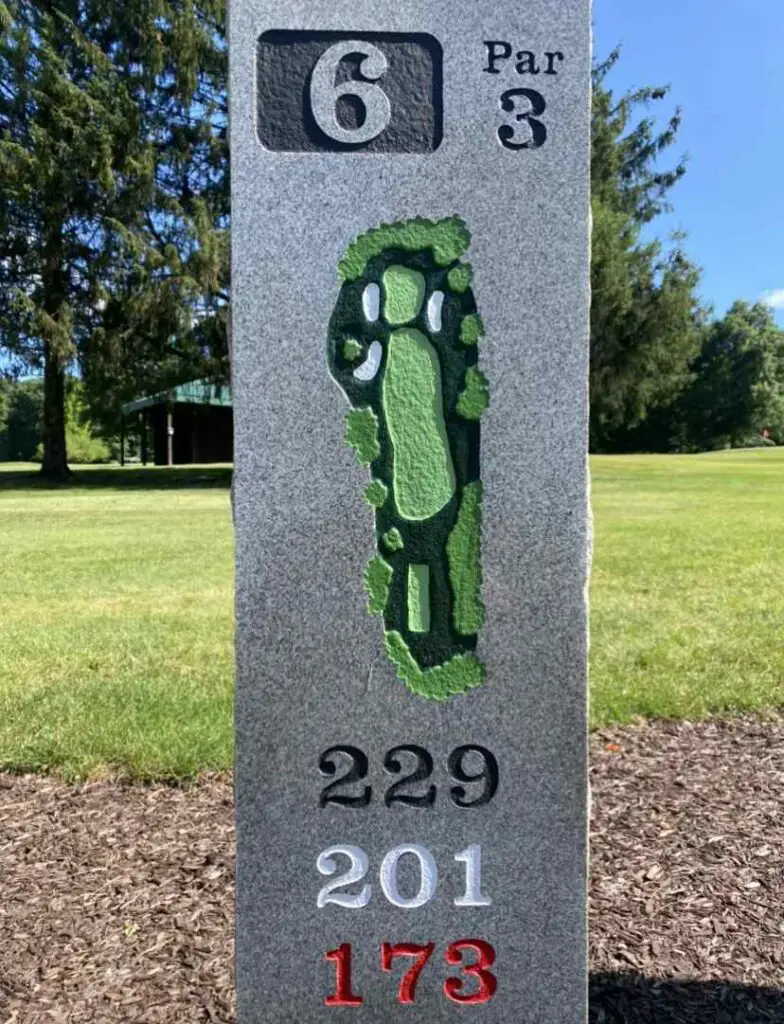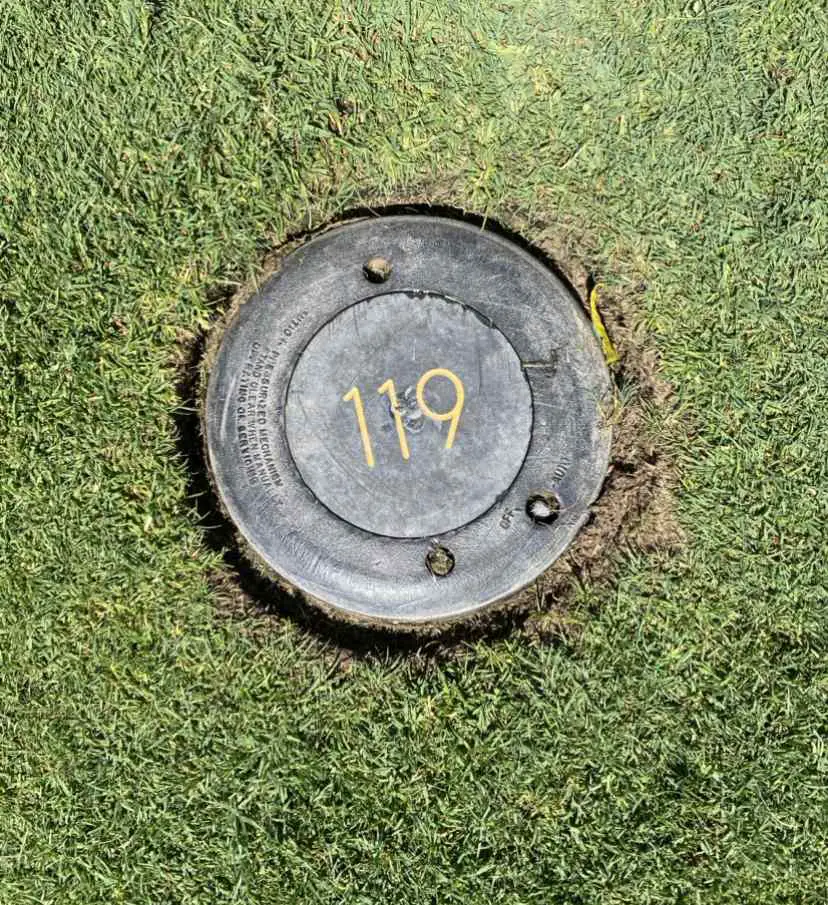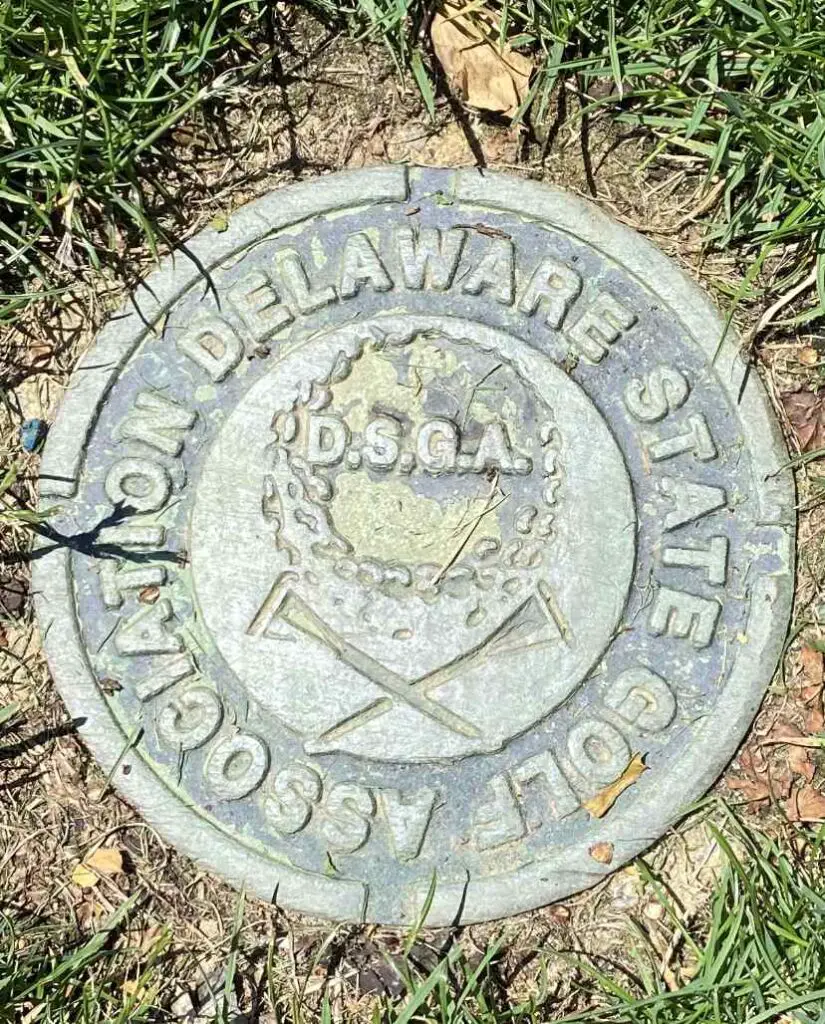Golf courses are covered with markers from tee to green. Someone new to the game might wonder what all these markers are used for, how accurate they are, and the different types of markers.
Yardage markers are used for many reasons on the golf course. The main use of a yardage marker is to inform golfers of an approximal distance of their ball to the flag. This distance is then used by golfers for shot strategy and club selection.
In the article below, we are going to cover all you need to know about the yardage markers on the golf course. We will look at their multiple roles on a golf course as well as cover their accuracy and so much more. We have a lot to cover so lets get started!
How Reliable Are Golf Courses Yardage Markers?
Today course markers might not be as important as in days past due to technical innovations like rangefinders and golfing distance apps. Before we had these technical advances in the game, golfers had to rely on course yardage markers to navigate the course.
Yardage markers are reliable on most golf courses. Technology for accurate distancing has been around for decades so most golf courses will have accurate measurements.
When courses are inaccurate it’s typically by a few yards. For most golfers, slight variations in actual distance vs marker distance are inconsequential to their shot.
There are some cases when yardage markers can be inaccurate. Changes in the course design can affect the distance from the marker to green. When golf courses move greens or alter fairways, they don’t always update the yardage markers.
The safest bet for accurate distancing to the hole is to use a rangefinder or distance app. If you don’t have access to these devices, use your intuition and gut to validate the marked distance to the hole.
Yardage markers are also used by grounds crew when working on the course. Markers can be used to identify areas where disease has started to spread or where an irrigation line has cracked. The use of these markers makes it easy to locate and remediate these common golf course issues.
Where Do Courses Place Yardage Markers?
Yardage markers are found all over the golf course. From the tee box to the fairway to the green. All of which serve their own purpose with the goal of helping golfers effectively play the hole.
1.) Tee Box Markers
Most courses will have detailed yardage numbers on the tee box for Men’s, Women’s, and Senior tees as well as an outline of the hole design.
These markers are essential for golfers to decide shot selection and strategy. These markers range in their complexity with upscale courses having detailed stone slabs outlining the hole to basic wood designs found on budget friendly courses.

2.) Fairway Marker
As you would expect, fairway markers are found around and in the fairway. Fairway markers vary by course and hole length. Golf yardage marker colors are typically 250 yards (Yellow,) 200 yards (Blue,) 150 yards (White,) and 100 yards (Red) to the green. The use of these markers depends on the hole’s length.
Par 5s will usually contain all markers. Par 4 markers depend on the length with longer holes containing 200-yard markers and shorter holes only containing 150- and 100-yard fairway markers.
Most Par 3s do not typically contain any yardage markers other than the yardage markers on the tee. Interested to learn if Par 6 holes exist? Check out our article Are There Any Par 6 Holes In Golf?
You will find a couple different designs of fairway markers on the golf courses. Wooden stakes are common as well as in-ground stone or cement slab markers.
Stake makers are typically located right off the fairway whereas in-ground makers are found in the center of the fairways. Both markers serve the same purpose with a different look.

3.) Sprinkler Marker
A more recent addition to markers on the course is sprinkler head markers. As you would expect, these are markers that have yardage totals listed on the top of sprinkler heads.
Unlike the predetermined placement of the fairway makers, sprinkler yardage markers will be found scattered throughout the fairway. Each marker will have their own unique distance to the green, following the path of the irrigation system.

When Did Golf Courses First Start Using Yardage Markers?
Golf as we know it started in the mid-18th century and along with it so did yardage markers. Yardage markers are a staple on the golf course and are as old as the game itself.
Prior to the advent of rangefinders and distance apps, golfers relied on these markers to effectively navigate the course.
Given the importance of knowing the course yardage, its no wonder why yardage markers have been around so long.
Where Do Yardage Markers Get Measured To On The Green?
Yardage markers are measured to the center of the green. This is an important factor to think about during club selection. Golfers need to adjust the actual yardage for the pin placement on the green.
For large greens, flags can be upwards of 15+ yards for the central marked distance.
Another consideration when looking at yardage is elevation and weather.
100 yards uphill is much different than 100 yards downhill when determining club selection. Similarly, weather such as wind and rain can also be a factor when determining yardage to the pin.
Yardage markers are invaluable tools on the golf course but be sure to appropriately adjust your club selection to account for factors such as pin placement, elevation, and weather.
Why Are There Markers With No Yardage Numbers?
In some cases, there are markers on the course that do not list yardage for the distance to the green. Besides yardage markers, commemorative markers are also often found on courses to celebrate landmark events or milestones.
While not useful for club selection, these are interesting artifacts on a golf course that showcase the course history and traditions.

Final Thoughts
Yardage markers are as old as the game itself. They have provided valuable distance information to golfers throughout their round way before rangefinders and distance apps.
While not as precises as their new technological distance finding counterparts, yard markers are still accurate enough to guide golfers in today’s rounds.
Use these markers to navigate the course and soon you will understand why these golf relics are so important to the game.
Hopefully you liked this article and found it informative. Check out our other blog posts if you liked this one!

